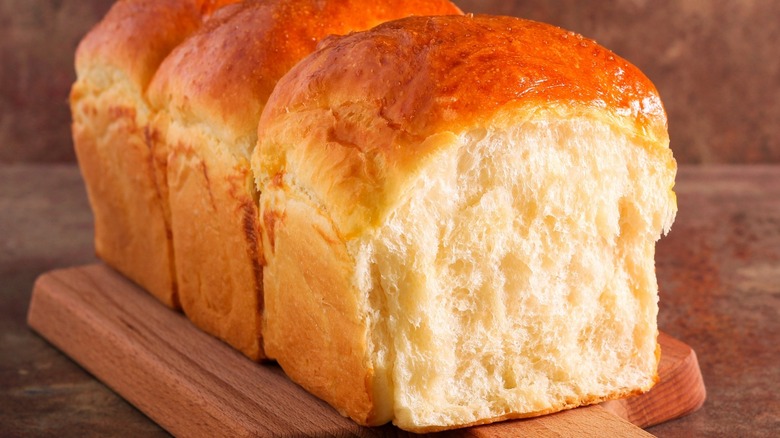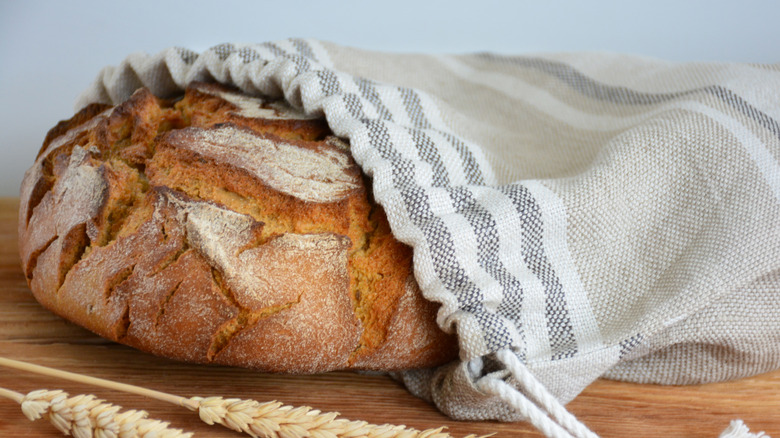Why You Should Be Storing Your Fresh Bread In Paper, Not Plastic
Challah, brioche, focaccia; have you ever met a bread you didn't like? Bread has existed for over 10,000 years and is found in every culture globally. For many of us, it is a part of our daily diets, defining cultures, and has been the symbol of religion, peace, and life. Plus, it's delicious.
Although store-bought bread is convenient, there is nothing better than freshly baked homemade bread. Warm from the oven with an audible crunch to the crust and chewy, tender crumb — fresh bread is hard to resist. Unfortunately, unlike sliced bread from the grocery store, fresh bread goes stale quickly. Without chemicals, preservatives, enzymes, or other additives, the most you can hope for is three days, knowing it will never be as good as it was on day one.
However, there are a few tricks to prevent your loaf from getting moldy or drying out immediately. First, avoid storing bread in plastic unless you are freezing it. Wrapping bread tightly promotes mold growth, especially if the environment is hot or humid. Instead, store bread in a paper or reusable linen bag, allowing the moisture to dissipate. Reusable bags are eco-friendly, machine washable, and sold nationwide.
Although challenging with large loaves, some home cooks have successfully stored fresh bread on a bed of uncooked rice in a glass container. The rice absorbs the moisture the bread releases, preventing mold formation. The crust will be soft and require some CPR, but time in the oven will rectify that.
Allow the bread to breathe
Unfortunately, storing the bread in paper or linen will allow the bread to dry out faster, but that can be rectified with toasting and generous amounts of butter. There's nothing we can do about mold unless you're Alexander Fleming. Bread should be stored in a dark, cool location like a bread box or drawer. Although popular, avoid storing bread on top of the refrigerator or near the dishwasher. Those appliances generate a lot of heat, which will quickly promote mold spores.
To keep the sliced section of a loaf from drying out, add another slice of bread as a cap, covering the exposed part of the bread. Often discarded, the end of the loaf (known as the heel or butt) is also a good choice. Another option is to make the initial cut in the center of the bread. When you are done, butt those two halves back together, reducing the surface area in contact with the air and prolonging moisture retention.
If you don't think you will finish the loaf within three days, take the leftover bread, wrap it in a freezer-safe bag (plastic is okay here), and freeze it. You can freeze the loaf whole or slice and individually wrap each piece to make portioning easier in the future. The refrigerator will draw the moisture from the bread quicker, so refrain from refrigeration unless your kitchen is sweltering. Individual frozen slices can be toasted directly from the freezer, but you should defrost whole loaves.

